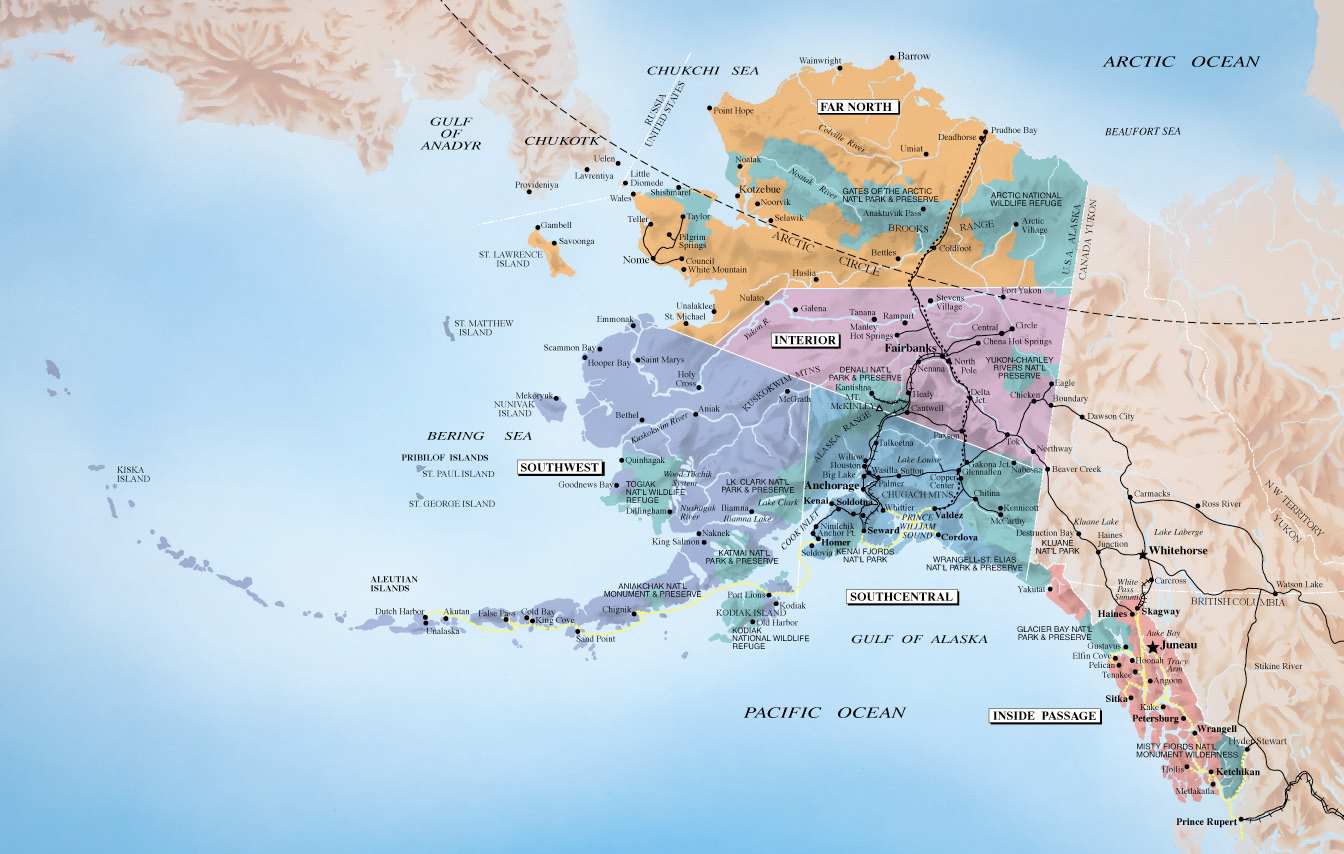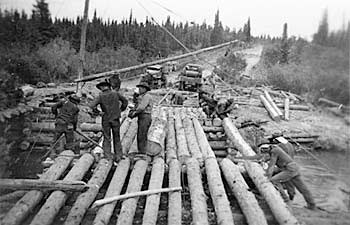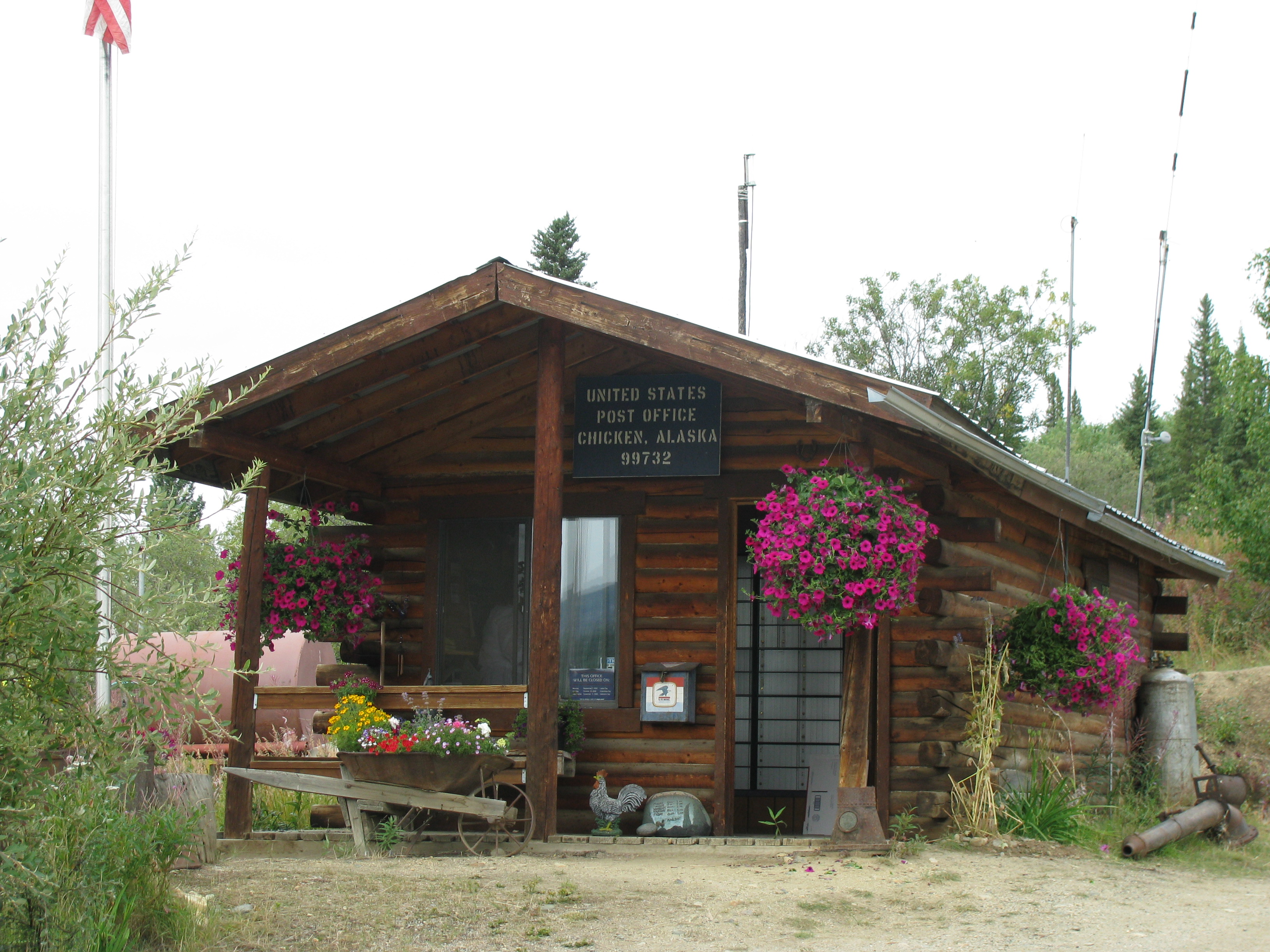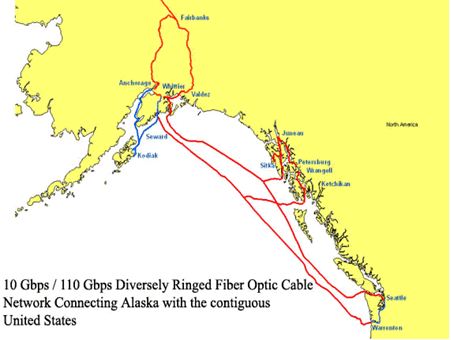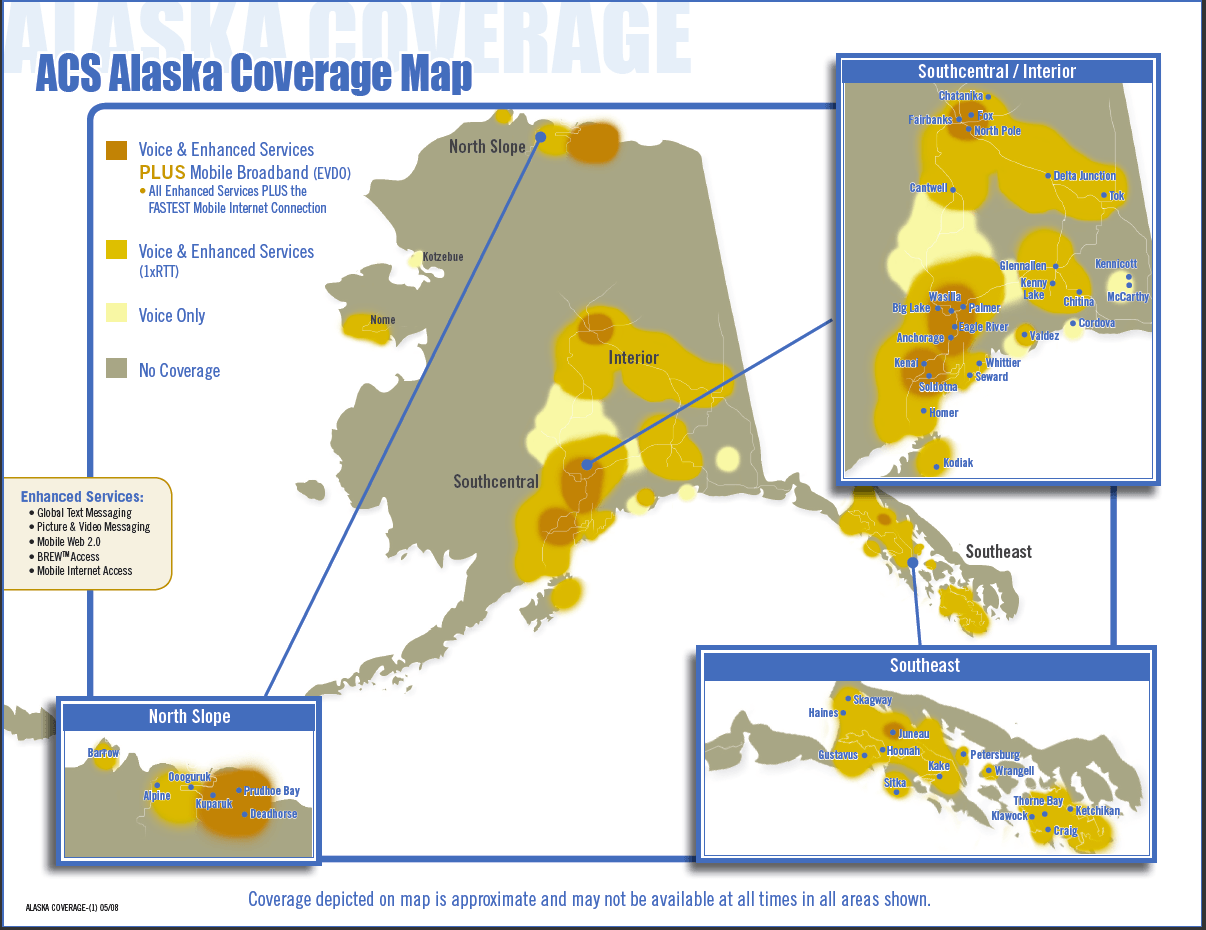KENAI PENINSULA
PART I - TIMELINE
Approximately 1000: Dena'ina Indians moved onto the western Kenai Peninsula.
1778: James Cook sailed his ships into his namesake inlet.
| Map of south-central Alaska. Courtesy of Janet Schaefer, AVO/ADGGS. |
1785 to 1791: Three redoubts or forts were established on the Western Kenai Peninsula by two Russian mercantile companies engaged in the fur trade. Alexandrovsk Redoubt (1785) was a Shelikhov Company post at Nanwalek, St George Redoubt (1786) was a Lebedev Company post established at the mouth of the Kasilof River, and St. Nicholas Redoubt (1791) was a second Lebedev Company post established at the mouth of the Kenai River.
1791: The Russian trading post, Fort St. Nicholas, was constructed at the present day city of Kenai for the purposes of fur and fish trading by the Russian-American Company. It was the second permanent Russian settlement in Alaska.
 |
| The old Russian Village along the Ninilchik River. |
1840: Alaska became a diocese of the Russian church and for the first time had a resident bishop.
1841: Bishop Innocent (Veniaminov) created six new parishes; including Kenai. In the same year. the Russian-American Company employees built the first chapel at Fort St. Nicholas, dedicating it to the Assumption (into Heaven) of the Virgin Mary (Theotokos—Mother of God, as she is called by the Orthodox).
1844: Igumen (Abbot) Nicholas was the first priest to live at Kenai and serve the parish, which eventually included not just the fort and its community but also seven other communities, encompassing several hundred square miles.
Early 1860's: Abbot Nicholas started a school. He also acted as arbiter between the officials of the Russian-American company and the natives. His diaries report his activity in vaccinating the population, a practice ordered by Bishop Innocent.
1867: Russia sells Alaska to the United Stated and Alaska becomes a U. S. territory. U.S. Army units were deployed to secure the territory.
 |
| Fort Kenay Replica |
1871: Fort Kenay was abandoned.
1883: A major forest fire burned on the peninsula creating optimal moose habitat.
 |
| Holy Assumption Orthodox Church, Kenai Alaska ca. 1900, courtesy Anchorage Museum of History and Art. |
1896: At Ninilchik, a school was built and staffed by Russian Orthodox priests and laymen.
1897: First sport hunter arrived on Kenai Peninsula. Dall DeWeese from Canon City, CO.
By 1900: Five schools were operating in the Kenai parish, all under the direction of the Russian Orthodox church.
 |
| Ninilchik Russian Orthodox Church in front of Mt. Redoubt |
1904: Forest Ranger William A. Langille travelled the Kenai Peninsula from Seward to Seldovia. During this trip, he realized the unique value of the land as a wildlife and hunting preserve.
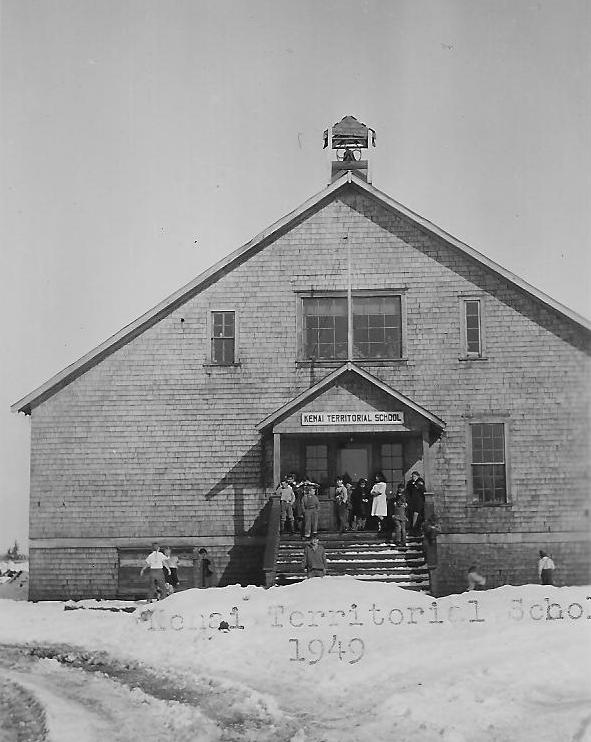 |
| Kenai Territorial School 1949 |
1907: The American Territorial School of Kenai was established by the U.S. Bureau of Education. For a time, Dena’ina youth went to both the Orthodox school taught in Russian and the Territorial school taught in English.
1911: In Ninilchik, the first school sanctioned by the U.S. government was started.
1926: Alaska Glacier Tours Association had its first party of big game hunters. They hunted in the Tustumena Lake region.
1932: Areas north of Kenai River and Skilak Lake were closed to moose hunting, and the bag limit on sheep was reduced from two to one.
1940's: Homesteads were opened on the peninsula. WWII veterans were given preference.
 |
| Sign for Kenai National Moose Range |
1947: Forest fire burned 300,000 acres on the Kenai National Moose Range.
 |
| Early Alaskan Oil Well |
1957: Oil discovered in the Swanson River Field by the Richfield Oil Corp, 20 miles northeast of Kenai. This was the first major oil discovery in Alaska.
 |
| Book Focused on Kenai Peninsula Communities at Time of Statehood. |
1961: 1st Borough Bill passed and signed by Governor Egan.
1963: 2nd Borough Bill, CS for House Bill No. 90, passed and signed by Governor Egan, directed that on Jan. 1, 1964 the Kenai Peninsula Borough be formed.
 |
| Granite Point oil platform, Cook Inlet, Alaska. Photo source: Greenpeace /Robert Visser By Dina Cappiello, Associated Press |
1966: National Wildlife Refuge Administration Act created the National Wildlife Refuge system.
1968: Oil was struck by Atlantic Richfield at Prudhoe Bay.
 |
| Upper Kenai River on the Kenai National Wildlife Refuge |
(i) to conserve fish and wildlife populations and habitats in their natural diversity including, but not limited to moose, bear, mountain goats, Dall sheep, wolves and other furbearers, salmonoids and other fish, waterfowl and other migratory and nonmigratory birds;
(ii) to fullfill the international treaty obligations of the United States with respect to fish and wildlife and their habitats;
(iv) to ensure water quality and quantity;
(iv) to provide opportunities for research, interpretations, environmental education, and land management training; and
(v) to provide in a manner compatible with these purposes, opportunities for fish and wildlife-oriented recreation.
 |
| April 21, 1990 eruption cloud from Redoubt Volcano as viewed to the west from the Kenai Peninsula. Photograph by R. Clucas |
March 2009: Mount Redoubt volcano, 106 miles southwest of Anchorage began a series of eruptions after being in Orange or "Watch" status since late January 2009. Plume heights were observed at or above 60,000 feet during two of the six significant eruptions. Ashfall occurred over south central Alaska, including Anchorage, with amounts ranging from a trace to one-half inch in depth.
 |
| Photo by McKibben Jackinsky |
May 2009: The continued shutdown of oil production in Cook Inlet due to the eruption of Mount Redoubt cost the state of Alaska approximately $1.5 million a month in tax revenue.
Eruptions also disrupted air traffic in the region. Hundreds of commercial flights were cancelled and cargo companies were significantly impacted.
 |
PART II - CAUSE-EFFECT STATEMENTS
1. Russian-American Company founds Kenai (1791) and Ninilchik (1835); employees of company build Russian Orthodox Churches (current buildings 1894 & 1901 respectively): churches start schools (Early 1860's, 1896).
2. Oil discovered on peninsula (1957) and in Cook Inlet (1965) creates jobs and experienced workers; workers go to North Slope when oil discovered there (1968); families remain bringing North Slope dollars to peninsula.
3. Mount Redoubt erupts (1990 & 2009); flights cancelled; employees laid off; military operations disrupted.
And an extra one that happens to be my favorite......
4. Big fire on peninsula, hunter dude from USA hunts giant moose, tells influential buddies about big moose, government bigshots hear about big moose and send forest ranger to check it out, ranger thinks peninsula a cool place, reports back, conservation observed, Kenai National Moose Range formed at beginning of WWII, more fires, Alaska National Interest Lands Conservation Act (ANILCA) changes name of Kenai National Moose Range to Kenai National Wildlife Refuge for purpose of fulfilling treaty obligations and conservation, hunter and fisher dudes and dudettes come to area with pockets full of cash to hunt and fish.

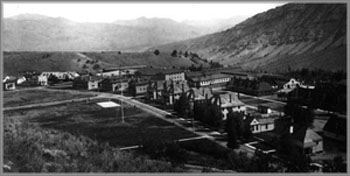
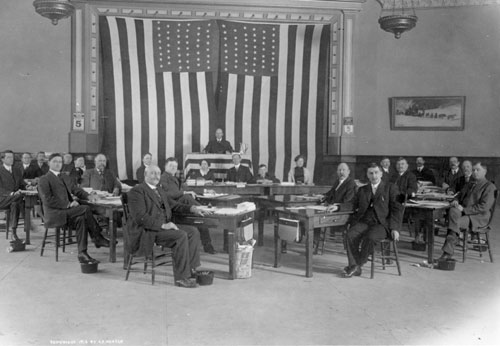

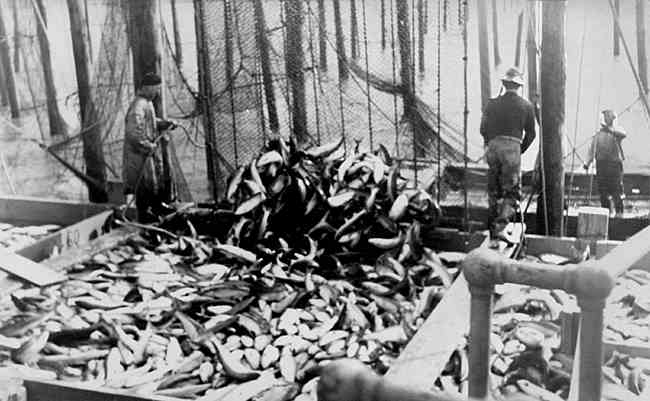





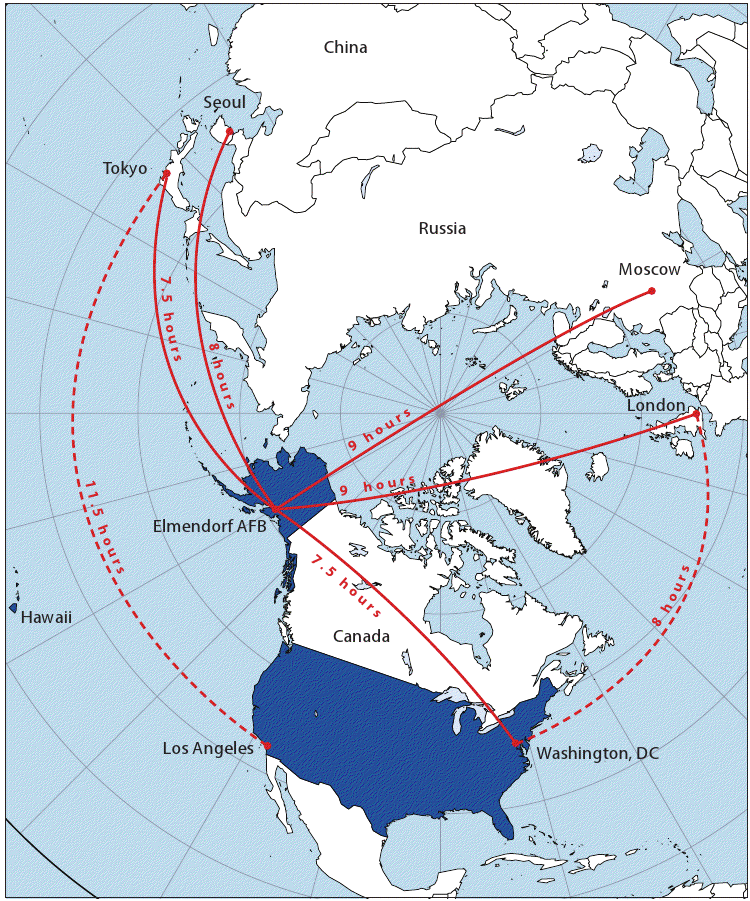


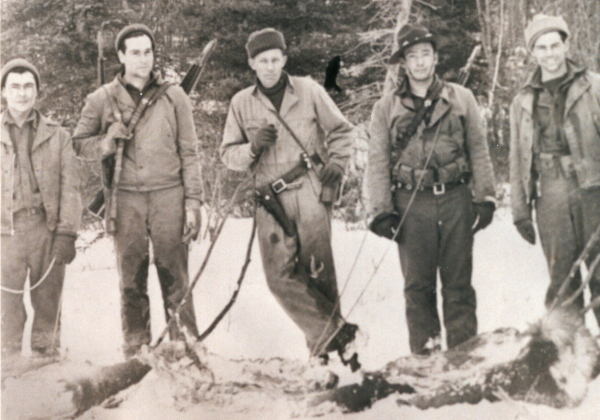

![[Photo] Seventh Infantry Division troops landing at Massacre Bay, Attu, May 1943. [Photo] Seventh Infantry Division troops landing at Massacre Bay, Attu, May 1943.](http://www.nps.gov/nr/twhp/wwwlps/lessons/7attu/7images/7coverbl.jpg)
